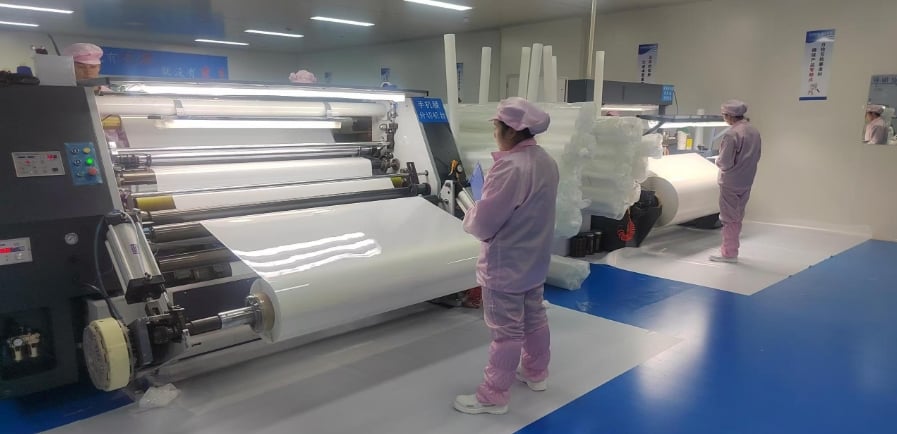From Raw Materials to Finished Product: Inside the PPF Manufacturing Process
Blog post description.
10/18/20252 min read


1. Why Understanding the PPF Manufacturing Process Matters for Wholesalers
For B2B wholesalers, choosing a reliable and technically capable PPF supplier directly affects your business reputation and customer satisfaction.
While the PPF market is growing rapidly worldwide, product quality varies widely among manufacturers.
By understanding how PPF is produced—from raw materials to finished rolls—you can evaluate supplier capabilities and ensure your business sources from true factories rather than simple trading intermediaries.
2. The Three Core Layers of High-Quality PPF
A premium Paint Protection Film consists of three main layers, each determining the product’s performance and lifespan:
TPU Base Film
Made of Thermoplastic Polyurethane (TPU), known for excellent elasticity and impact resistance.
Serves as the structural backbone of the film.
High-end factories use Aliphatic TPU, which is UV-resistant and prevents yellowing over time.
Top Coating Layer
Provides anti-stain, anti-scratch, and self-healing functions.
Often made from nanocoating or fluorosilicone compounds.
Self-healing technology allows light scratches to disappear with heat exposure.
Adhesive Layer
Determines installation ease and bonding strength.
High-quality PPF uses Acrylic Pressure Sensitive Adhesive (PSA)—non-residual, stable, and paint-safe.
3. Step-by-Step: How PPF Is Manufactured
Step 1: Raw Material Preparation and Inspection
Every quality PPF begins with strict material control.
TPU resin is tested for transparency, elongation, and heat resistance.
Adhesives are checked for initial tack, holding power, and peel strength.
Coating liquids are mixed in a temperature-controlled cleanroom to avoid contamination.
👉 Top factories maintain independent testing labs and meet ISO, RoHS, and REACH standards to guarantee consistency.
Step 2: Multi-Layer Coating and Lamination
This is the most critical stage in PPF manufacturing.
Through advanced coating and laminating lines, multiple layers are precisely bonded together.
Coating thickness is controlled within ±1μm tolerance.
Cleanroom environments prevent dust and particles from affecting clarity.
Static removal and tension control ensure smooth, bubble-free surfaces.
This process directly determines optical clarity, UV resistance, and product durability.
Step 3: Curing and Stabilization
After lamination, the film passes through thermal and light curing systems to enhance bonding between layers.
Temperature typically ranges from 50°C–70°C.
This step stabilizes adhesive properties and improves coating adhesion.
The semi-finished film is then inspected for gloss level, transparency, and thickness consistency.
Step 4: Cooling, Slitting, and Rewinding
Once cured, the film rolls are cooled and stabilized for 12–24 hours before cutting.
They are then slit and rewound into standard rolls (usually 1.52m × 15m).
During this stage, quality control checks include:
Uniform thickness
No adhesive bubbles or flow marks
Scratch-free and dust-free surface
Step 5: Quality Testing and Packaging
Before shipping, each batch undergoes rigorous testing, such as:
Tensile and tear strength – to ensure elasticity and installation flexibility
UV aging test – simulating 3–5 years of sunlight exposure
Adhesion test – confirming no lifting or residue after removal
Once approved, PPF rolls are packaged in anti-static film tubes and moisture-proof cartons, each with traceable batch codes.
PPF manufacturing combines advanced materials engineering with precision coating technology.
For B2B wholesalers, understanding the production process is not just technical knowledge—it’s a business advantage.
